Events In History
-
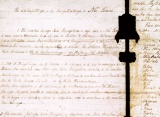 28 October 1835He Whakaputanga signed by northern chiefs
28 October 1835He Whakaputanga signed by northern chiefsThirty-four northern chiefs signed He Whakaputanga (a declaration of independence) at a hui called by the British Resident, James Busby. Read more...
Articles
Treaty timeline
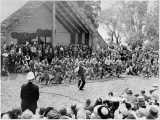
See some of the key events between 1800 and 1849 relating to the Treaty of Waitangi.
- Page 1 - Treaty events 1800-49See some of the key events between 1800 and 1849 relating to the Treaty of Waitangi.
He Whakaputanga - Declaration of Independence
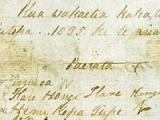
On 28 October 1835, 34 rangatira signed He Whakaputanga o te Rangatiratanga o Nu Tireni (the Declaration of Independence of the United Tribes of New Zealand).
-
Database of signatories to He Whakaputanga o te Rangatiratanga o Nu Tireni (known in English as the Declaration of Independence of the United Tribes of New Zealand)
-
Page 3 – Further information
Further reading relating to He Whakaputanga - the Declaration of Independence
The Treaty in brief
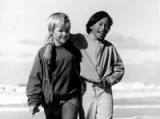
The Treaty of Waitangi is New Zealand’s founding document. It takes its name from the place in the Bay of Islands where it was first signed, on 6 February 1840. The Treaty is an agreement, in Māori and English, that was made between the British Crown and about 540 Māori rangatira (chiefs).
- Page 2 - Treaty FAQsAnswers to some common questions about the Treaty of
Biographies
-
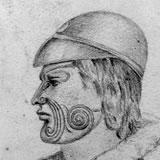 Heke Pōkai, Hōne Wiremu
Heke Pōkai, Hōne Wiremu
Ngāpuhi chief Hōne Heke was an influential northern Māori voice in favour of the Treaty of Waitangi. However, he later became a leading opponent of British rule in New Zealand.
Read more... -
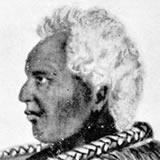 Kawiti, Te Ruki
Kawiti, Te Ruki
A notable Ngāpuhi chief and warrior and a skilled military tactician who reluctantly signed the Treaty of Waitangi in 1840.
Read more... -
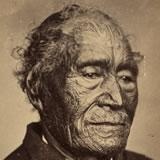 Nene, Tāmati Wāka
Nene, Tāmati Wāka
Renowned Ngāpuhi chief, Tāmati Wāka Nene, was an early friend of Pākehā. He was one of its most influential supporters in the debate at Waitangi over the Treaty and he was among the first to sign.
Read more... -
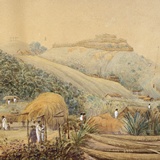 Pomare
Pomare
Pōmare II was a prominent Ngāpuhi chief who signed the Treaty of Waitangi. He was later arrested by the British on suspicion of treason but released on the intervention of Tāmati Wāka Nene.
Read more... -
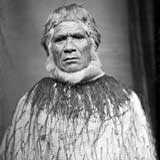 Te Hāpuku
Te Hāpuku
Hawke's Bay chief, Te Hāpuku, signed the 1835 Declaration of Independence and the Treaty of Waitangi. He opposed the King Movement fought against the Hauhau and Te Kooti.
Read more... -
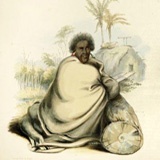 Te Wherowhero, Pōtatau
Te Wherowhero, Pōtatau
In the 1850s, a movement was set up to appoint a Māori king who would unite the tribes, protect land from further sales and make laws for Māori to follow. Te Wherowhero became the first Māori king in 1858.
Read more... -
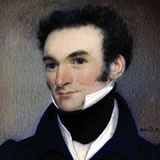 Busby, James
Busby, James
Edinburgh-born James Busby was British Resident, a consular representative, in New Zealand from 1833. Based at Waitangi in the Bay of Islands, he was given little material support to achieve British policy aims, but in early 1840 he helped William Hobson draft the Treaty of Waitangi.
Read more... -
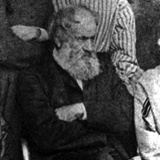 Clarke, George
Clarke, George
Lay missionary George Clarke reluctantly became "Chief Protector of Aborigines" in 1840, leading a department of sub-protectors whose role was to look after Maori interests.
Read more... -
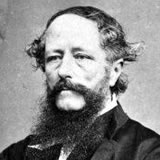 Colenso, William
Colenso, William
Colenso arrived at the Bay of Islands as the Church Mission printer in December 1834. His achievements include printing the New Testamont in Māori and the Māori version of the Treaty of Waitangi.
Read more... -
 Williams, Henry
Williams, Henry
Henry Williams was a missionary who supported British annexation. He believed that Māori should be protected from lawless Europeans and fraudulent dealings. He and his son Edward translated the Treaty of Waitangi into Māori.
Read more... -
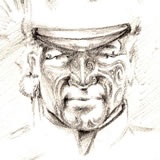 Moka Te Kainga-mataa
Moka Te Kainga-mataa
A Nga Puhi leader, Moka Te Kainga-mataa was an original signatory of the 1835 Declaration of Independence. Moka's name – but not his signature – also appears on the 1840 Treaty of Waitangi
Read more...
Related keywords
- united tribes
- james busby
- pre-1840 contact
- treaty of waitangi
- waitangi
- charles de thierry
- missionaries
- george clarke
- maori land
- ngati kahungunu
- te hapuku
- treaty signatories
- maori leaders
- te reo māori
- tainui
- waikato
- potatau te wherowhero
- kingitanga
- musket wars
- pomare II
- ngapuhi
- northern war
- moka te kainga-mataa
- printing
- MPs
- william colenso
- te ruki kawiti
- tamati waka nene
- henry williams
- flags
- kororareka
- hone heke
- timeline
- william hobson
- new zealand company
- george gipps
- george grey
- treaty claims
- waitangi tribunal

